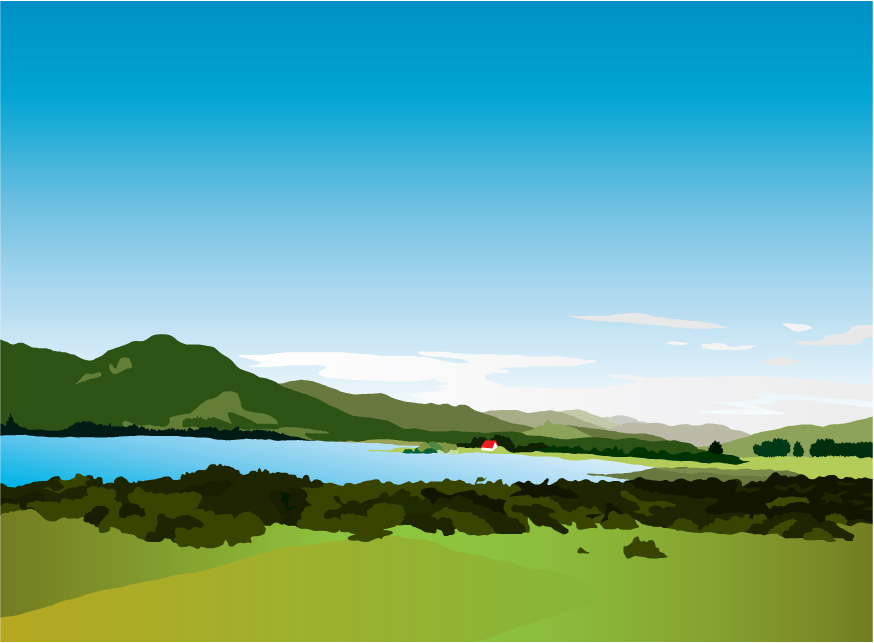Most of Scotland is Rural, and Plans for Net Zero Must Make That Work

Rob Richardson and Graeme Roy
Rural areas present a distinctive set of challenges, as well as opportunities, on the road to net zero.
Rural Scotland accounts for 97% of Scotland’s land mass, and 17% (930,000 people) of its population. The rural population is also growing at a faster rate than the rest of Scotland, driven mainly by in-migration to more accessible rural areas. However, rural areas have a lower proportion of the population in the age range 16 to 44 than the rest of Scotland, driven by the out-migration of younger people particularly for higher education and employment opportunities.
What do we mean by rural places?
The Scottish Government differentiates between accessible rural places, which are less than a 30-minute drive to the nearest settlement of 10,000 people, and remote rural places. Approximately two thirds of Scotland’s rural population lives in accessible rural places. This serves as a reminder that rural places are not homogenous entities, and this diversity perhaps helps to account for variation in local level emissions targets; for example, many including Glasgow and Edinburgh are targeting net zero by 2030.
Not all rural places are the same – and this difference matters
Both accessible and remote rural areas do differ from urban Scotland in important ways. Infrastructure, particularly transport, is often limited in rural areas. As a result, residents are disproportionately reliant on car travel. Nearly a third of residents in remote rural places experience extreme fuel poverty, while 75% of people in remote rural areas and 82% in accessible rural areas drive a car or van to work or education, compared to 60% for the rest of Scotland. Over half of households in Scotland access the internet using superfast broadband, but only a third of rural populations have this access. Meanwhile, the agriculture, fishing and forestry sector accounts for 15% of workers in remote rural areas and 12% in accessible rural areas, compared to just 0.5% across the rest of Scotland.
Data on UK carbon emissions by local authority area reveal that the areas with the highest per capita emissions tend to be either areas with large industrial sites, or those with relatively low populations compared to the size of the area- i.e. rural places. This trend is reversed when emissions are measured per square kilometre (figure 1).
Policies targeting individuals, such as a tax on carbon, are therefore likely to have a disproportionate cost for residents of rural areas, while the gains from economies of scale provided by concentrated urban populations and properties are also absent. Likewise, overarching concepts such as local living and ‘20 minute neighbourhoods’, a key feature of the recently adopted Fourth National Planning Framework, do not map straightforwardly into rural contexts.
| Figure 1. Left: net emissions of greenhouse gases per capita by local authority (tonnes CO2e per capita, 2021). Right: net emissions of greenhouse gases per square kilometre by local authority (tonnes CO2e per km2, 2021). Source: UK local authority greenhouse gas emissions estimates 2021 (publishing.service.gov.uk) | |
Lowering carbon emissions from transport
Transport is the UK’s largest source of CO2 emissions, 56% of which is from passenger cars. The geography of rural populations and services means public transport is often less viable and therefore limited, which places greater emphasis on roads and vehicle travel. In Scotland, wrangling over delayed upgrading of the A9 between Perth and Inverness demonstrates the continued sensitivity of road access. Scotland’s island communities face particular challenges, meanwhile. Disrupted ferry crossings by an ageing fleet have rendered air travel more attractive, according to Highlands and Islands Enterprise, while plans to establish key road connections in the Shetland Islands through a series of new road tunnels are advancing.
Supporting a transition to electric vehicles is therefore a logical response, but lack of charging infrastructure, and a shortage of skills for installation and maintenance, are limiting factors. Car club schemes where people can hire a vehicle on a short-term basis, have promise and are increasing in coverage, including in remote places. For example, the Rousay, Egilsay, and Wyre Development Trust in Orkney operates an electric vehicle leasing scheme for residents, as well as a community transport service to Mainland Orkney.
What to do about housing and carbon?
The housing stock in rural Scotland is generally less energy efficient than urban places, with just 7% of properties in rural Scotland flats, compared to 39% across the rest of Scotland. The age and design of housing stock creates challenges, without the energy efficiency benefits of urban density. The Scottish Federation of Housing Associations has advocated for greater investment in the supply chains needed for the particular delivery context of rural housing, and in England, calls for a ‘rural uplift’ to government-funded schemes to increase energy efficiency reflect the higher costs associated.
Changes to agricultural practices are needed – but this poses problems
The importance of agriculture to rural economies presents particular sensitivities for achieving a ‘just transition’. Given the sector’s high C02 emissions, changes to patterns of both production and consumption of meat and dairy will be necessary, as will reassurance to rural communities that livelihoods will be protected. Rural land reserves also provide major opportunities for carbon sequestration and offsetting; the Scottish Government plans to restore 20,000 hectares of peatland carbon stores per year, for instance. Yet, the Scottish Land Commission warns that land is being purchased by companies at scale for similar purposes, without an appropriate coordinating and regulatory framework, which could compromise speed in addressing climate change
So how are rural places key to Net Zero targets?
Rural places have access to significant assets in the pursuit of net zero, particularly for generating renewable energy. The newly-published Highlands and Islands Enterprise 5-year strategy aims to embed net zero within the region’s industry, and identifies the key opportunity of developing renewable energy capacity, including offshore wind and marine energy. 57% of electricity generated in Scotland comes from renewable sources, compared with 36.2% in England and Wales, while 3.4 gigawatts of new capacity is under construction – a 25% increase on current capacity – the majority via offshore win farms in the Moray Firth. The designation of the nearby Inverness and Cromarty Firth Green Freeport aims to capitalise on this capacity, while also reducing economic dependence on North Sea oil and gas. Yet, it will remain important to ensure community support exists, particularly in the case of major national projects, given the installation of infrastructure such as wind turbines can be divisive.
The UK has failed to make substantial progress on reducing CO2 emissions beyond the energy sector, particularly the difficult sectors of transport, industry, housing and agriculture. Scotland’s rural places face distinctive challenges in contributing to this reduction, but will play an intriguing and important part in the increasingly urgent journey to net zero.The Scottish Government has set a target date of 2045 for net zero emissions of all greenhouse gases, demonstrating ambition beyond the UK Government’s target of a 100% reduction of greenhouse gas emissions compared with 1990 levels by 2050, but further-reaching solutions will be required, given Scotland is falling behind on reaching its emissions targets and on plans to decarbonise transport and buildings.
